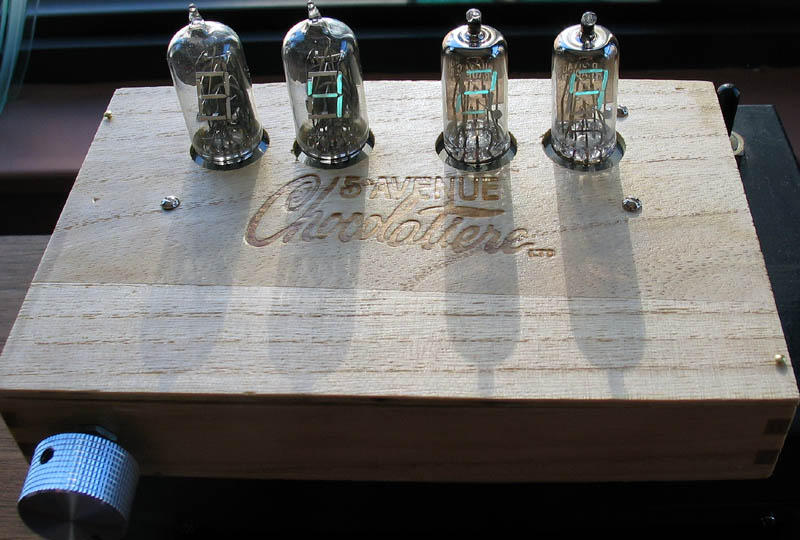Chococlock
I picked up some GE (I think) VFD tubes and decided to make a clock from them.
For the case, I used the box from a batch of delicious chocolate truffles we'd received
as a gift - hence the chococlock.

I measured the locations of the tube pins, created a template using a CAD package,
marked and drilled holes in a piece of PCB, and use pin receptacles to create a
custom socket. Unfortunately there was a problem, as one of the VFDs was a
dud. Furtunately I had a couple of spare digivac dt1075's lying around, and
even more fortunately they almost fit in the same socket (the center pin a a bit
off, I had to drill another hole). I used two GE tubes for the hours (they
are a bit bigger) and the digivacs for the minutes.
VFD tubes are driven using a low voltage drop but high current across their filament,
and by driving plates coated with flourescent paint to a high voltage to attract
the electrons from the filament. You can find some documentation for driving
a digivac here, and I assumed that the GE tubes
would be driven similarly. Each filament should drop 1.2 volts, and 20 volts
should be applied to the plates.
I didn't have any 20 volt power supplies lying around, but I did have a 12 volt
one. I used an ICL7660 voltage doubler to convert the 12 volts to 24.
The ICL7660 is inexpensive and easy to use (it is a capacitor charge pump).
While the ICL7660 cannot supply much current, little is needed as the plates just
need to be biased.

